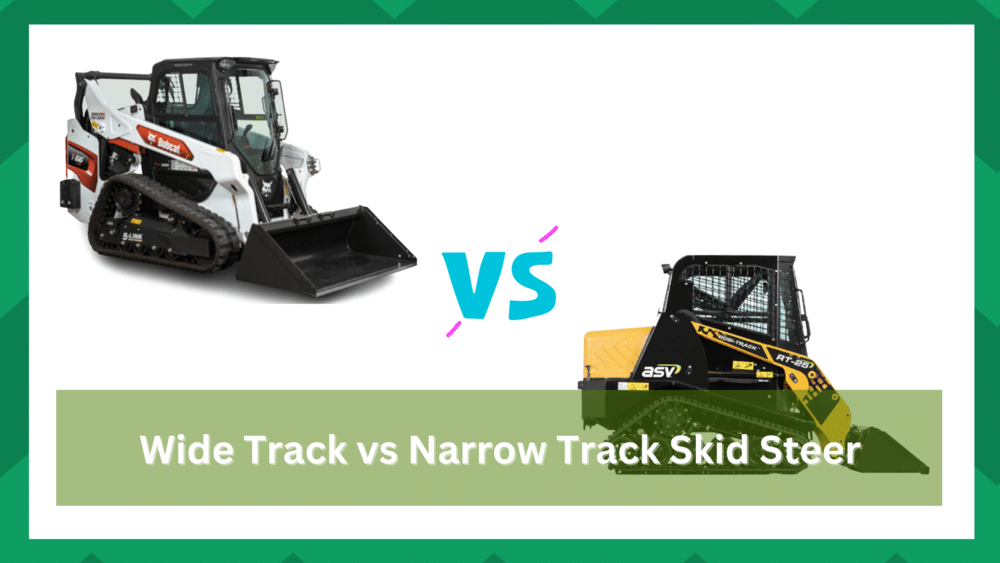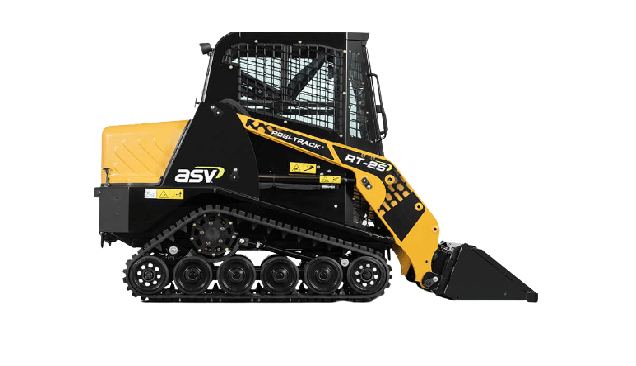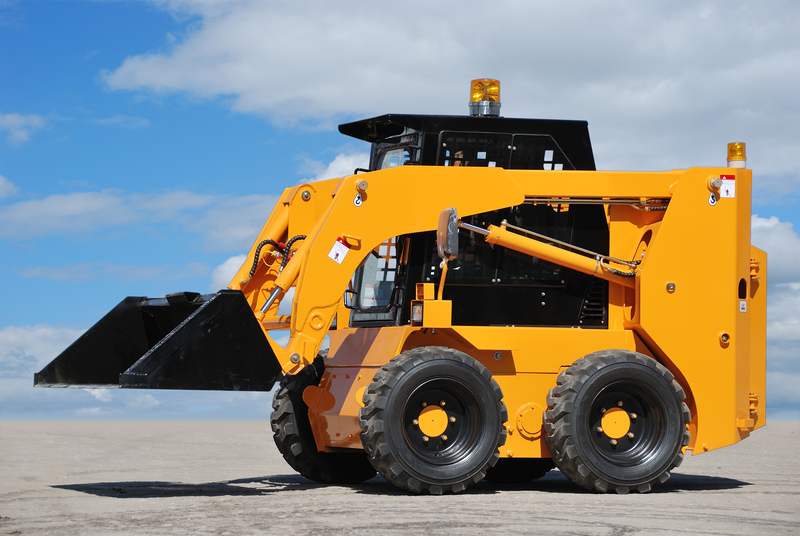
Skid steers are small-sized and powerful loader machines used to lift heavy materials.
They are often seen in construction ideas and near landscapes. They come with attachments that can be replaced according to the requirement of the job.
However, the tracks of the skid steer play a key role in their functionality.
They are important because the tracks control the motion and balance of the skid steer. There are three main types of tracks available, i.e., standard, wide, and narrow.
The standard track is most commonly used for all general purposes.
So if you have a single machine you are using for different applications, going with the standard track would be the right option for you. It is a good all-rounder and can be used for soil, dirt, or ground applications.
Both other track options are experts, providing their benefits in particular applications.
Many often ask whether they should use wide or narrow tracks on their skid steer when not working with the standard track.
If you are also wondering about the tracks on your skid steer and cannot finalize your decision, then we will help you by comparing wide and narrow tracks to help you better understand the difference between the two tracks.
Considering their features and the applications they are best used for, you can easily decide which the right pick is for you and your land.
So, without any further distractions, have a quick look at the table below that signifies their difference which does help you decide better. For further detailed information, continue reading the blog post.
Wide Track vs Narrow Tracks On Skid Steer
| Feature | Wide Track | Narrow Track |
| Surface Area | Large | Small |
| Ground Pressure | Low | High |
| Flotation of Skid Steer | High | Low |
| Stability | Excellent | Good |
| Damage to Ground | Less | More |
| Best for | Landscaping soft, wet, muddy soil | Harder, Rocky, Slippery surfaces |
Wide Track On Skid Steer
Almost all skid steers work fine with both types of tracks. However, some skid steers require tracks based on the requirement of the job.
You can use wide tracks on your skid steer if you do not want too much ground pressure because of your skid steer.
The wide tracks work by distributing the overall weight of the machine, which minimizes pressure at one point only. Such tracks can be vital at landscaping sides or near huge buildings.
The wide tracks also increase the flotation of your vehicle. Also, wider tracks have a larger footprint.
This makes it much easier to work at mining, landscaping, and an area with soft, sandy, wet, and muddy soil. Such tracks can also be used in place of tracked machines.
The stability offered by the wide tracks to the skid steer improves the working experience of the vehicle.
Also, the wide tracks on the skid steer offer more surface area. This quality helps you to do work easily and more quickly. These tracks can cover larger areas in less time than the narrow track.
About 6 most common wide track designs can be used to further increase the efficiency of the tracks.
The multi-bar lug is the most widely used wide track pattern on a skid steer. It offers more friction and flotation than other track styles. Such a track design is durable and can be used in all seasons.
They are ideal to be used in construction areas that are located in some hilly areas and have extremely wet and muddy soil conditions.
Narrow Tracks On Skid Steer
While wide tracks offer more flotation and reduce pressure on the ground, narrow tracks are ideal when push force is the main priority of your work.
Also, it works efficiently if you are not concerned about the flotation of the skid steer.
Narrow tracks offer less surface area. Due to this, it concentrates the entire weight of the machine at one point. This increases the ground pressure and traction produced by the vehicle.
The narrow tracks are a good choice if you work in slippery areas such as ice or hard rocky surfaces.
Narrow tracks are much more effective when used with dozers.
They have a higher penetrating force because of less surface area, having greater ground pressure which means they will dig deeper into the earth.
Although they are not recommended for soft soil, the greater pressure would produce less flotation, and the skid steer would penetrate the soft ground, keeping you from continuing your work efficiently.
They can also be used when you require more push force on a smooth surface.
The narrow tracks also work well when you require more grip and hence should be used when the work requires greater push force on the hard, rocky, and slippery surface where the flotation of skid steer is not a big concern.
Comparison between Wide and Narrow Skid Steer Tacks
Ground Pressure
Knowing the ground pressure your skid steer produces is necessary to decide what surface it best suits.
When comparing Wide and Narrow tracks, it has been established that the weight distribution is greater and better with the greater surface area of the track.
Hence, the wider tracks of the skid steer would distribute the load of the Skid steer equally on the ground producing relatively less ground pressure, making them pre-eminent for landscaping applications on soft soil with greater flotation.
Compared to this, the narrow tracks with small surface area center the weight and pressure over small surface/ ground, producing far greater ground pressure and traction force than the wider tracks.
Use narrow tracks when flotation of your Skid Steer isn’t your biggest concern and the push force of your Steer is your prime concern.
Stability
Since the stability of any automobile depends on the surface area it is distributed, the Wider track skid loaders have comparatively greater stability because of their larger surface area.
Since the Skid steer is not too high from the ground, the wiser tracks allow greater compact with the ground, increasing the skid steer’s sturdiness.
In comparison, although the narrow tracks provide good stability, the lesser surface area it covers puts a little down in sturdiness when precisely compared with the wider tracks.
Ideal For
Considering the specific features of each of the tracks, you can appreciate which one would be ideal for your land.
If your project involves landscaping in muddy areas with soft soil or where the climate is always rainy, and you can expect a shower at any time, then going with the wider tracks is an ideal option.
Contrary to this, if your work requires traction on very hard surfaces with bigger rocks or areas that have extremely cold weather and you expect to work in icy lands with narrow tracks with greater ground pressure, an excellent grip is your go-to option for a safe and efficient way to get your work done.
Maintenance
To keep your tracks working efficiently, you must ensure the tracks are taken good care of, considering the guidelines for their proper maintenance and precautions. The tracks have a life of anywhere from around 400 hours to almost 2000 hours.
But how long it works for your project depends on how well you care for them.
On average, if taken good care of, they may long for around 1600 hours to help you complete your work projects effectively and on time.
Check the traction tension daily or weekly, depending on your usage and manufacturer recommendations. Mostly it is preferable to check them every 50 hours of usage.
It is also necessary to grease your skid steer tracks every 10 hours to effectively carry out the tasks and create the ground pressure they are constructed for.
Nevertheless, Skid Steers with tracks do much better than tires as they offer a smoother ride and provide greater breakout and lifting force.
The greater contact area, compared to the wheeled skid steer, also provides them greater stability.
So if you have chosen the Skid Steer with tracks, the next decision you would have to make is about which Tracks among the standard, wide and narrow you should choose, which you can now easily decide by reading the detailed information of both the specific types.
The Bottom Line
So, what do you conclude? Which tracksuits are you the best in? All in all, both tracks work fine on the skid steer.
However, both tracks are used and preferred for certain areas specifically. This is because the wide tracks provide less ground pressure, more surface area, and more flotation.
They are preferred to be used in places where the main focus is the flotation of the skid steer.
On the other hand, the narrow tracks offer less surface area, less flotation, more ground pressure, and more grip.
These tracks are preferred in areas where the flotation of the machine is the least focused. We have provided you with the basic information you need to decide. We hope that you find our article helpful.





